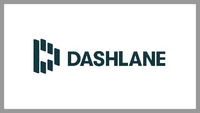IAM vs business password manager: What’s the difference?
Find out which digital security system will keep your business more secure

Business owners and IT administrators know that strong digital security is essential for keeping sensitive data safe. But with many tools for managing your business’s digital footprint, it can be hard to know what systems you need, and how they can work together.
Identity and access management (IAM) and business password managers are security systems businesses should be aware of. In this guide, we’ll explain the difference between IAM and business password managers, and help you decide which option your business needs.
Dashlane is Techradar's Best Password Manager Dashlane is an advanced password manager with a free VPN, a one-click password importer and charger, dark web monitoring and encrypted cloud storage. Start your free trial for business at Dashlane.com.
What is IAM?
IAM is an umbrella term that comprises a variety of strategies and tools for enabling a business’s employees to securely access the data they require. The goal of IAM is to give each employee a unique digital identity that they can use for various business operations.
IAM includes many security approaches, such as single sign-on (SSO), multifactor authentication, role-based permissions, and network audit logs. In fact, password managers are often included under the umbrella of IAM.
An effective IAM system enables IT administrators to control who is allowed to access a specific business network, and what data and resources each person can interact with. IAM also involves verifying each individual’s identity during logins, and includes measures to prevent digital identities from being stolen or misused.
What is a business password manager?
A business password manager is a software program that enables employees to create and share secure passwords. The purpose of a password manager is to securely store the login details that employees need to access sensitive company resources.
Unlike consumer-grade password managers, business password managers are typically overseen by an organization’s IT team. An IT administrator can ensure that employees use strong passwords, and control which individuals or groups have access via specific passwords. Administrators can also see logs of the passwords used to access specific accounts, enabling them to audit employees’ movements through a business network.
IAM vs business password manager: Security features
IAM and business password managers are unique in how they approach digital security. Business password managers address just one part of online security—keeping employees’ passwords secure—while IAM is a more comprehensive approach that often includes a password manager.
IAM strategies and business password managers do have some features in common. Both typically offer multifactor authentication, which requires employees to confirm their identity with something besides their password when logging into accounts. Multifactor authentication typically relies on authenticator apps or biometric features such as fingerprints.
In addition, IAM and business password managers may both support single sign-on authentication. With SSO, employees can log in once and then access the digital resources on a company’s network. This improves security because it reduces the number of times employees need to log in and potentially expose their account credentials.
IAM and business password managers also provide digital records of who accesses which accounts and when. Business password managers track the login credentials that are used, and when, while IAM systems may also track what data is accessed following a login. The latter is especially important when there is a suspected intruder in a business’s network, and administrators have to determine what data was accessed.
IAM vs business password manager: Role-based access
Both IAM and business password managers go beyond simply securing accounts. They also provide role-based access to specific data and apps. For this purpose, IAM systems are more robust than business password managers.
With a password manager, IT administrators are limited to sharing or not sharing the password for an account with a specific employee. Once the employee has the password, password management software on its own cannot control what data or features of an app they have access to.
IAM systems, on the other hand, can provide granular detail of an employee’s permissions. For example, two employees may have access to an app. With an IAM system, one of those employees may only be able to access certain features, while the other has complete access to the app.
The flexible role-based access features IAM provides are particularly important in larger companies, and in those organizations that have to abide by strict privacy regulations such as HIPAA.
IAM vs business password manager: Pricing
Generally speaking, business password managers cost less than IAM systems. This is because most IAM systems include a business password manager alongside other security features like single sign-on, employee directories, and multifactor authentication.
Depending on the size of your business, you can expect to pay around $4-$6 per user per month for a standalone business password manager. A comprehensive IAM system can cost $5-$10 per user per month, or slightly more for an IAM system that integrates with your business’s HR software.
IAM vs business password manager: Which does your business need?
Business password managers and IAM systems have a lot in common. In fact, business password managers are typically part of a strong IAM system. That said, these two security systems are best suited for different types of organization.
For small and medium-sized businesses that only have a few employees to manage, a standalone business password manager is often enough to keep your business secure. Password managers can include features such as single sign-on and multifactor authentication for additional security, and they provide audit logs IT administrators need to track network intrusions.
For larger businesses or businesses that must abide by strict privacy regulations, a comprehensive IAM system is more appropriate. The role-based access features IAM systems provide are important for making sure employees only have access to the data and apps they require. This reduces opportunities for data leaks or misuse, and helps your business comply with regulations like HIPAA.
Are you a pro? Subscribe to our newsletter
Sign up to the TechRadar Pro newsletter to get all the top news, opinion, features and guidance your business needs to succeed!
Michael Graw is a freelance journalist and photographer based in Bellingham, Washington. His interests span a wide range from business technology to finance to creative media, with a focus on new technology and emerging trends. Michael's work has been published in TechRadar, Tom's Guide, Business Insider, Fast Company, Salon, and Harvard Business Review.


